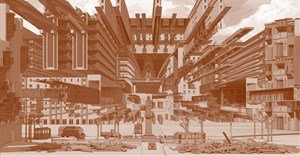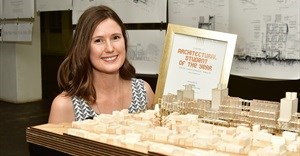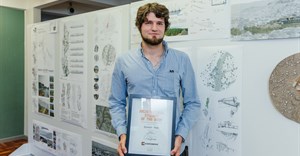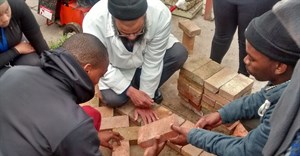
Subscribe & Follow
Advertise your job vacancies
Jobs
- Industrial Designer Cape Town
- Landscaping Foreman George
- CAD and 3D Designer Randburg
- Architect Project Manager Cape Town
Winning student proposes high streets in low income areas
Clint Abrahams of the University of Cape Town (UCT) has won third prize in his region in this year's Corobrik Architectural Student of the Year Awards for his thesis entitled "High Streets: Constructing the public realm in low income areas". He also won an award for the best use of clay brick in his thesis.
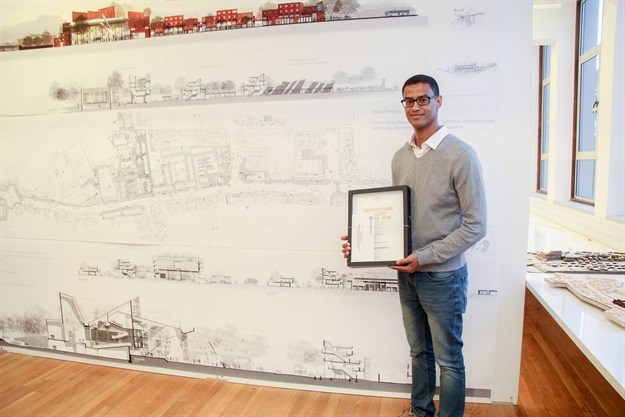
His thesis proposes, through the design of a Further Education and Training (FET) college in the low income area of Delft, to construct an institutional building that aids a positive public realm and reinforces the town’s emerging high street by facilitating diversity.
Unique street energy of Delft
Abraham’s interest in high streets came from growing up in Macassar, an apartheid-planned township which had no high street. Having lived in Observatory for the past seven years, he became intrigued by the different energies of the adjacent high streets there. This prompted him to try and understand what constituted a functioning high street and how architects and urban designers could retrofit this idea to lower income areas.
He decided to site his thesis in Delft, a low income area 25km from Cape Town’s CBD, because its unique street energy was reminiscent of areas like Observatory.
"In Delft, the high street is an emerging one that has both informal and institutional use. However, here the energies are brought about by the informal activities and not the institutional use. My design explores how institutional buildings can also aid positive street-making conditions in the same way the informal use does.
"The lack of high streets in low income areas negates the socio-economic vitality of these towns," Abrahams explained. "By understanding how a high street functions one is able to transfer the aspects of good streets to low income areas.
"Locally referred to as main streets, these streets are where most shops and other businesses and transport modes are found."
Diversity was key
Abrahams explained that diversity was key to making a functional high street. His thesis investigates which components create street diversity such as the pace of the street, adaptability to rapid change and a concentration of things. It looks at how high streets exist within the Cape Town context and compares developed high streets, emerging high streets and areas with no high streets.
He identifies Main Road, Delft as an emerging high street where he finds that the informal and institutional uses constitute the street but that the institutional buildings have a lack of positive street-making characteristics.
He believes that his design of an FET college, an institutional building, would facilitate diversity in Delft’s high street.
"The components of street diversity are explored by developing three building types that make various street conditions, namely a building onto a town square, a building as a thoroughfare and a building as an edge," Abrahams said.
The use of clay brick
Abrahams specifies clay brick for the construction of his Delft design and, as a result, was also named UCT’s winner of the Award for Best Use of Clay Brick.
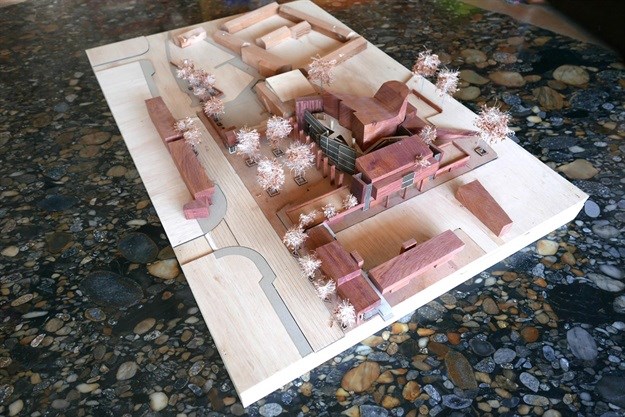
he model of Clint Abraham’s prize-winning design of an FET College in Delft which aims to facilitate diversity and reinforce an emerging high street in this low income area near Cape Town.
"By using clay brick construction to construct the public realm, an enduring new civic image is created that speaks of robustness and low maintenance," he said. "The construction methods are appropriated to available skills and thus create job opportunities."
"The building trade, in particular brick masonry, supplements the livelihoods of many households in low income areas. These trades are often practised outside to build up wealthier areas, a situation that is reminiscent of how apartheid-planned towns remain subservient to wealthier towns. Masonry work is practised in an ad hoc manner in these areas and is not representative of the creativity and skills of local labour. The idea is to bring these skills that are practised elsewhere, home."
Abraham went on to say that, by using clay brick in a creative manner, it challenges the mundane use of clay brick for traditional institutional buildings in these areas.
"In my Delft design, brick is used as enclosure, screening and ground cover as well as craft and pays homage to the informal way it is used in the area."
The ideal material
Christie van Niekerk, Corobrik’s GM in the Western Cape, praised Abraham’s vision and his appreciation of the value of clay masonry construction.
"There is a growing realisation that clay brick is the ideal material for institutional and government projects, even for affordable housing, due to its sustainability and strength. While concrete and innovative building technologies are more penetrable due to their higher level of movement, they can develop cracks easily and therefore don’t last as long. By comparison, brick is less penetrable and can last a lifetime."









